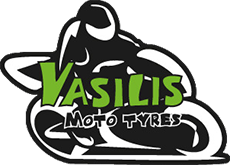Translated by: John Agrafiotis
Last updated:

Currency: €
Driving license: EU citizens just need the European driving license. Non EU citizens must have an International Driving Permit (IDP).
Visa – Passport: EU nationals are only required to produce evidence of their EU nationality and identity in order to be allowed entrance to any country that is a member of the EU. This evidence can take the form of a valid national passport or national identity card. Either is acceptable. Check this page for further details.
Border Crossings: Borders to Portugal and France are open. Entering from Andorra, you must stop and be prepared for delays during busy times. Leaving to Andorra, you generally do not need to even stop, but you must slow down and be prepared to stop if requested.
Insurance: EU citizens just need a Green Card. For non EU citizens, make sure that your International Motor Insurance Card is valid for Spain.
Fuel: Unleaded gasoline is called gasolina sin plomo. Credit cards are widely accepted. Unleaded 95 costs about 1.18€ per lit (valid on 12/2020). For more info check the government’s official site.
Equipment:: Drivers and passengers must wear crash helmets and helmet gloves (new 2021 law).
Time Zone: GMT +1
Maximum Allowed Blood Alcohol Level: 0,05%
Speed limits: 120 km/h on motorways, 100 km/h on dual carriageways, 90 km/h on single carriageway roads and 50 km/h inside towns. At the entrances of small villages, there are radars that control your speed and if you speed, a red light -usually located in center of the village- turns on in order to slow you down.
Specificities: Motorcycles are required to have their lights on 24h per day. It’s forbidden to overtake a tram from which passengers are coming out.
Fines: As a tourist or holidaymaker you will be asked to pay the fine on the spot. If you do not have cash with you a traffic officer will accompany you to a cash point to withdraw money. If you do not pay the fine, your car will be confiscated until you have the funds to pay the fine. At this point you will also have to pay the removal and confiscation costs. By paying the fine on the spot you only have to pay 50% of the full fine.
Tolls: There are two different toll types on the Spanish roads. You pay before you enter the road or take a ticket and pay as you exit the road. Roads with tolls are marked with an Α (autopista). Marked with Ν (autovias) are the fast roads with no tolls. On toll booths, the line marked as “telepago” is for the ones that have toll cards, “automatiko” is for those who pay with credit card and “maunal” or “metallico” is for those who pay in cash. A toll calculator can be found here.
Parking: You should never park in a distance smaller than 5 meters from a crossroad, in front of dropped gates or garages or where you see no parking signs (white square sign with a ref circle).
Signs:
Aparcamiento: Parking/Resting area
Ceda el Paso: Give priority
Centro: Town center
Comisaria: Police station
Cuidado: Drive carefully
Desvío: Detour
Dirección Ϊnica: One-way
Obras: Roadworks
Peligro: Danger
Todas Direcciones: All directions
Places with great view are marked with “camera” sign.
Useful Phone Numbers:
Police, Ambulance and Fire Department: 112 (European Emergency Number)
Useful links:
Wikitravel Spain
Spain Tourism official page
Lonely Planet Spain
Related trips:
Rocinante (In Greek language only)
Travel to western and southern point of Europe (In Greek language only)
Los Taxidious Periplanisious (In Greek Language only)
* If you are from Spain or have been recently in Spain and you would like to add some information or correct some of the above listed, do not hesitate to contact us.








